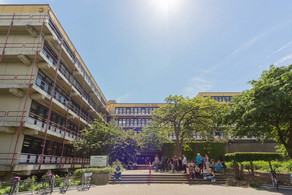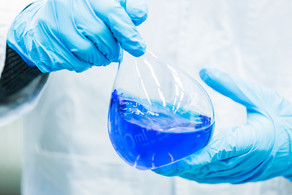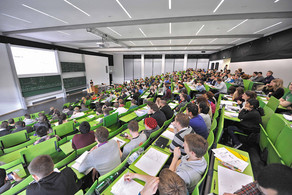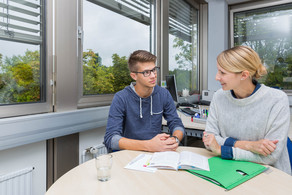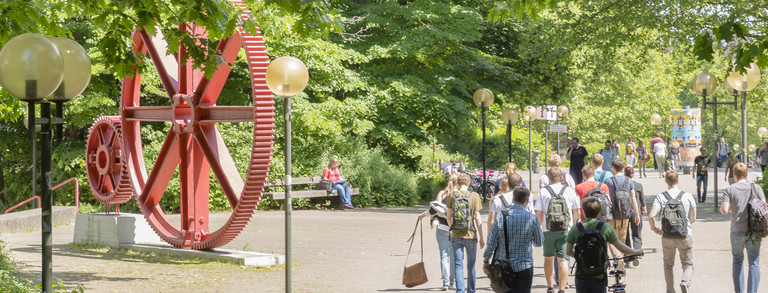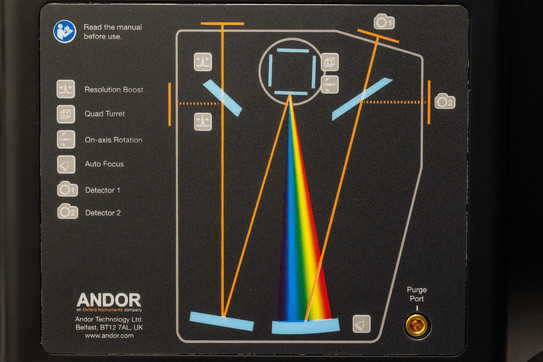Prof. Dr. Andreas Steffen
Technische Universität Dortmund
Fakultät für Chemie und Chemische Biologie
Anorganische Chemie
Otto-Hahn-Str. 6
44227 Dortmund
Germany
Room: C2-07-332
E-Mail: andreas.steffentu-dortmundde
Phone: +49 231 755 3800
Fax: +49 231 755 5048
Secretary
Peggy Sieg
Room: C2-07-331
E-Mail: peggy.siegtu-dortmundde
Phone: +49 231 755 3803
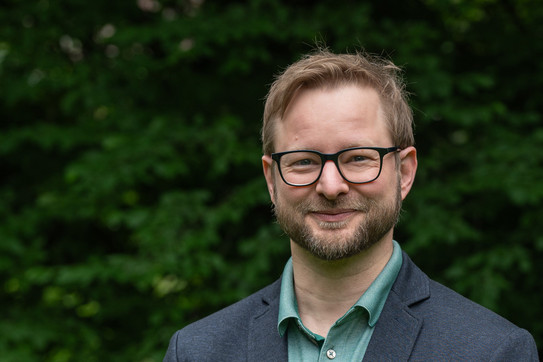
News
February 2025
19th Coordination Chemistry Meeting in Münster
Mr Andreas Prüfer and Mr Indranil Sen represent the Steffen group at the 19th Coordination Chemistry Meeting in Münster.
Mr Luca Machura joins the Steffen working group
We welcome Mr Luca Machura to our group. He will support the realisation of the research project ‘Molecular Entangled 2-Photon-Sources’, funded by the Volkswagen Foundation, as a laboratory assistant.
January 2025
Publication in Angewandte Chemie was accepted
The manuscript on long-lived phosphorescence of nanographenes, written in collaboration with Prof Sukumaran Santhosh Babu from CSIR-NCL, Pune, has been accepted and published online.
Mrs Mahshid Nikravesh leaves the working group
Take care, Mahshid, we wish you every success in your future career!
Mrs Helga Schulte goes into well-deserved retirement
After well over 30 years of service, it is with a heavy heart that we say goodbye to our laboratory assistant and secretary Helga. You have helped to shape the Inorganic Chemistry section for many decades. Thank you very much for your support, we will miss you!
December 2024
New edition of the Christmas lecture
Good news for the participants of the Inorganic Chemistry 1 lecture: the Christmas lecture will be resumed for the first time since the outbreak of the COVID pandemic. For the first time under the direction of Prof. Andreas Steffen and Prof. Sebastian Henke, the colourful diversity of chemistry will be presented to much effect.
Farewell to Mr Ondrej Mozdiak
We bid farewell to Mr Ondrej Mozdiak. After his three-month research stay, he is returning to the University of Pardubice to complete his PhD studies. Good luck, we enjoyed our time with you!
November 2024
Dr Joy Chatterjee joins the Steffen group
Dr Joy Chatterjee joins us as a postdoctoral researcher to contribute to the successful realisation of the project ‘Molecular Entangled 2-Photon Sources’, funded by the Volkswagen Foundation. Welcome, Joy!
Successful defence of Mr Sabyasachi Maity
Successful graduation of Mr Sabyasachi Maity
Congratulations on your successful graduation and good luck with your future career, Sachi!
Mr Fynn Soerries leaves the working group
Mr Fynn Soerries is leaving us and moving to the department’s Core Facility X-Ray. We wish you a good start and look forward to working with you in the future!
October 2024
PhD scholarship from the Hans Boeckler Foundation for Mrs Lilith Ünal
We congratulate Mrs Lilith Ünal on her PhD scholarship and would like to thank the Hans Boeckler Foundation for the generous funding and support of her project!
September 2024
Scientific retreat in the Sauerland
The group travels to Medebach in the Sauerland for a scientific retreat. We use the quiet surroundings and relaxed atmosphere for comprehensive presentations and intensive project work.
Mr Ondrej Mozdiak visits the Steffen group
Mr Ondrej Mozdiak, who is doing his doctoral studies at the University of Pardubice, will be joining us for a three-month research stay. A warm welcome!
August 2024
Publication in Chemical Science was accepted
The manuscript on ultrafast photophysical investigations of rhodacyclopentadienes, which was published as part of a collaboration with Prof Todd B. Marder and Prof Tobias Brixner from the University of Wuerzburg was accepted and published online.
Mr Konstantinos-Pantelis Zois leaves the group
We say goodbye to Mr Konstantinos-Pantelis Zois. We wish you every success for your doctorate, we enjoyed our time with you!
July 2024
Publication in Angewandte Chemie has been accepted
Our manuscript on isoindolinophanyl-based carbenes was accepted and published online.
Successful disputation of Mr Dimitrios Patronas
We would like to congratulate Mr Dimitrios Patronas on the successful completion of his Master's degree. Good luck on your future career!
May 2024
Mr Konstantinos-Pantelis Zois visits the Steffen group
A warm welcome to our guest from Greece: Mr Konstantinos-Pantelis Zois will join the Steffen working group in the coming months as an intern as part of the Erasmus+ programme.
April 2024
Mr Fynn Sörries joins the Steffen group
We welcome Fynn Sörries to our working group. He will support us as a laboratory assistant in the realisation of the research project ‘Molecular Entangled 2-Photon-Sources’, funded by the Volkswagen Foundation.
March 2024
Successful defence of Mr Lars Janiak
Congratulations on your successful completion and good luck with your future career, Lars!
Successful disputation of Mrs Leonie Ziemann
Ms Leonie Ziemann has completed her Bachelor's degree with the successful defence of her Bachelor's thesis. Congratulations and good luck with your further studies!
February 2024
Dr Ondrej Mrozek leaves the Steffen group
Dr Ondrej Mrozek is leaving the group after 3.5 years. Many thanks for your valuable contributions to numerous projects. We wish you every success in your future scientific career!
January 2024
Dr Matias Suburu joins the Steffen group
Dr Matias Suburu joins us as a postdoctoral researcher to contribute to the successful realisation of the project ‘Molecular Entangled 2-Photon Sources’, funded by the Volkswagen Foundation. Welcome, Matias!
Successful disputation of Mrs Anahita Emminghaus
We would like to congratulate Mrs Anahita Emminghaus on the successful completion of her Master's degree. Good luck in your future endeavours!
Successful defence of Mr Stefan Koop
Congratulations on your successful completion and good luck with your future career, Stefan!
November 2023
Dr Mahshid Nikravesh joins the Steffen group
Dr Mahshid Nikravesh joins us as a guest researcher. Welcome, Mahshid!
Successful defence of Mrs Julia Kuhnt
Congratulations on your successful completion and good luck with your future career, Julia!
October 2023
Start of the doctorate of Mrs Lilith Ünal
After successfully completing her master's degree, Mrs Lilith Ünal is starting her doctorate in the Steffen working group. Welcome and good luck, Lilith!
September 2023
Dr Aakash Nidhankar joins the Steffen group
Dr Aakash Nidhankar joins us as a postdoctoral researcher to contribute to the successful realisation of the project ‘Molecular Entangled 2-Photon Sources’, funded by the Volkswagen Foundation. Welcome, Aakash!
August 2023
Successful disputations by Mrs Lilith Ünal and Mrs Tabea Heil
We would like to congratulate Mrs Lilith Ünal and Mrs Tabea Heil on successfully completing their Master's degrees. Good luck in your future careers!
May 2023
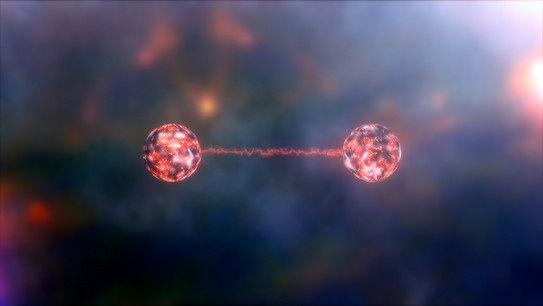
Approval of our "Momentum" proposal by the VW Foundation
Photons serve as the basis for novel quantum technologies, but linking their information has been very challenging so far. We want to change that in the future. Over the next four years, the Volkswagen Foundation will fund our project "Molecular Entangled 2-Photon Sources" with around 800,000 euros, in which we aim to produce entangled 2-photon sources for quantum information technologies through molecular design.
2022
Successful PhD of André Muthig
(27.10.2022)
We congratulate M. Sc. André Muthig on the successful defense of his PhD thesis (Near Infrared and Circular Polarized Luminescence of Donor Copper(I) Acceptor Complexes) and bid him farewell with best wishes.
Installation Edinburgh FS5
(14.10.2022)
In addition to the operation of the FLS1000, standard measurements for the investigation of the excitation and emission behavior can also be performed in the future with the FS5 Spectrofluorometer from Edinburgh Instruments. The use of a cryostat enables us to perform low temperature measurements at 77K in addition to measurements at room temperature.
Since the 2022 committee election, Prof. Dr. Andreas Steffen has been a member of the Senate Representation as of July 01, 2022.
First study on luminescent zinc complexes now available
(accepted 18.05.2022)
As of today, our first work on luminescent zinc compounds can be read in Chemistry - A European Journal. The novel Zn(II) complexes with cAAC ligands as chromophore exhibit extraordinarily long lifetimes, the cause of which was investigated and elucidated by comprehensive photophysical studies as well as supporting quantum chemical calculations by our cooperation partner Prof. Christel Marian (HHU Düsseldorf).
The SPP 2102 meets in Jena
(11.-13. Mai 2022)
Prof. Steffen and his co-workers M.Sc. Stefan Koop, M.Sc. Julia Kuhnt and M.Sc. Mousree Mitra participated in the meeting of Priority Program 2102 "Light-controlled reactivity of metal complexes" at the Friedrich Schiller University Jena and presented recent results in the field of zinc(II) emitters.
Approval of our SPP grant proposal
(Januar)
The second funding phase of the Priority Program 2102 "Light-controlled reactivity of metal complexes” has started and we’ll be part of the team, once again! Within the project "Design of circularly polarized NIR luminescence (CPL) by triad exchange of d10 complexes" we will investigate photoactive transition metal complexes once more in cooperation with our long-term collaboration partner Prof. Christel Marian (HHU Düsseldorf), this time focusing on the nickel triad.
2021
Award of the Teaching Prize 2021, Category 1
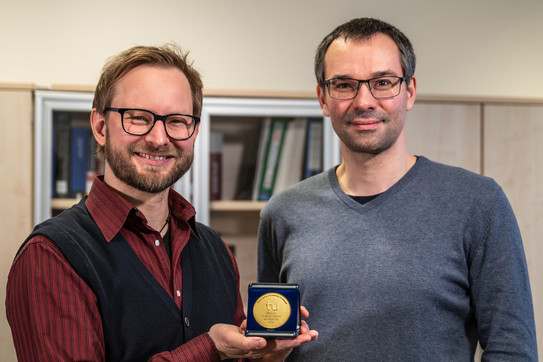
(16.12.2021)
Prof. Steffen and Prof. Henke were awarded the TU Dortmund University's 2021 Teaching Prize, Category 1, for their extraordinary commitment and successful execution of the first-ever all-digital first-semester lecture "General and Inorganic Chemistry (AC1)" in the winter semester 2020/21.
Extension of Julia Kuhnt's PhD fellowship
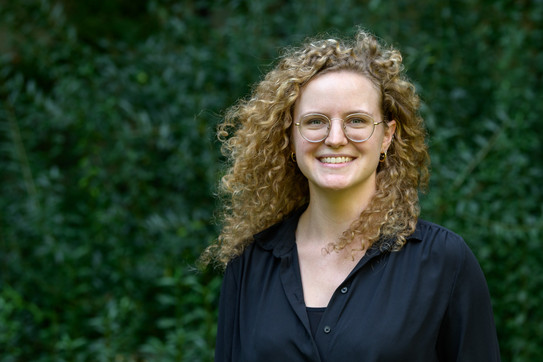
(08.12.2021)
We congratulate M.Sc. Julia Kuhnt on the extension of her PhD scholarship at the Deutsche Bundesstiftung Umwelt (DBU) and wish her good luck on her way to the finishing line!
Transient absorption spectrometer up and running
(05.11.2021)
With the completion of the last renovation work in our laser spectroscopy room, our transient absorption spectrometer is now ready for use and opens up new possibilities for us to study photoactive systems in the excited state. By combining a streak camera (Hamamatsu) with a Nd:YAG laser connected to an optical parametric generator (Ekspla), we can excite samples between 210-2300 nm and subsequently study them over the entire near-UV and visible spectrum with a temporal resolution in the picosecond to millisecond range - and even at temperatures as low as 77 K.
We thank the German Research Foundation for their generous support and are already looking forward to exciting findings.
Patent application "Emitter material for OLEDs”
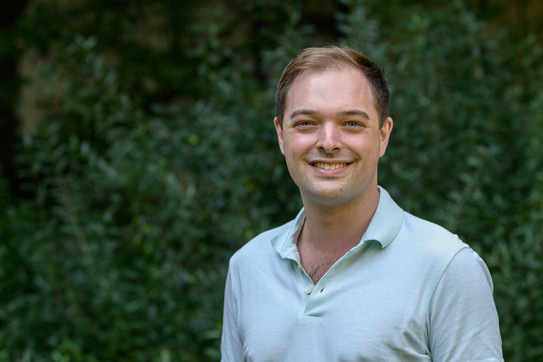
(November)
Based on M.Sc. André Muthig's promising work on chiral Cu(I) emitters, we have applied for the patent "Emitter material for OLEDs" (DE 10 2021 128 889.4) with our long-term cooperation partner Prof. Jens Pflaum (JMU Würzburg) and collaborators.
Dr. Andrei Beliaev receives Alexander von Humboldt Fellowship
(01.09.2021)
With the completion of his one-year postdoctoral fellowship from the Finnish Jenny and Antti Wihuri Foundation, Dr. Beliaev was able to secure two years of follow-up funding through a postdoctoral fellowship from the Alexander von Humboldt Foundation. Congratulations, we look forward to two more productive years with you!
Publication of our book chapter as part of CCC III
(19.07.2021)
The reference book Comprehensive Coordination Chemistry III has been published with our contribution "Design of Efficient Emissive Materials ". In addition to an introduction to the necessary photophysical theory and a discussion of general design criteria, we provide an overview of recent developments in the field of 3d transition metals, with a particular focus on Cu(I).

